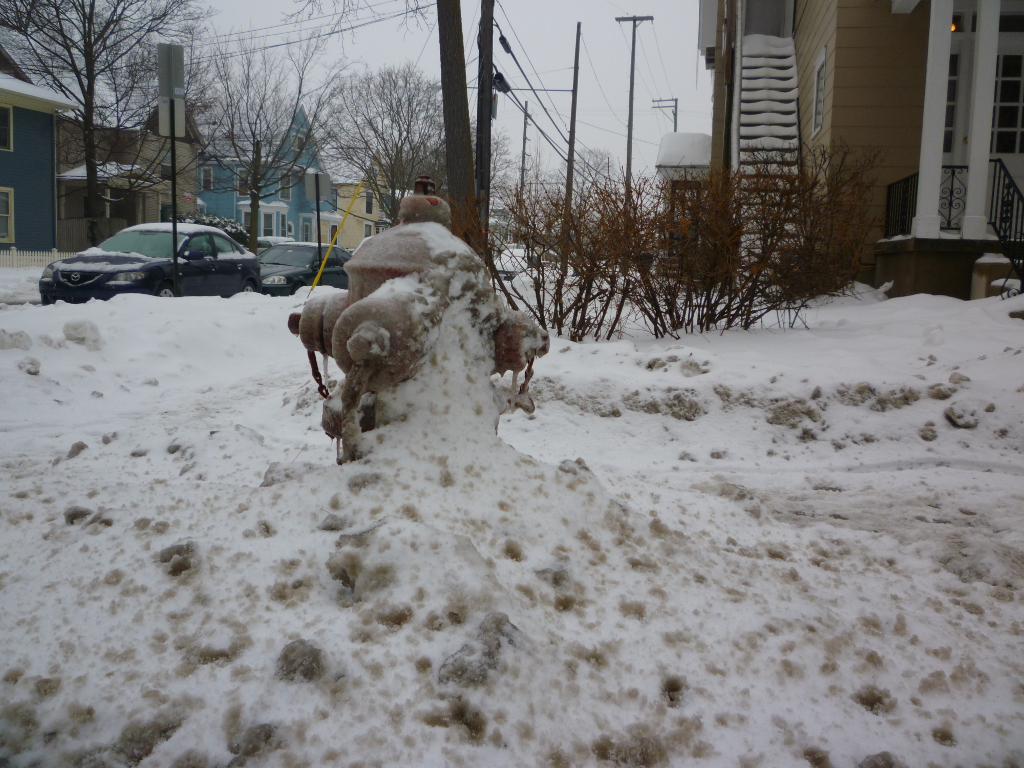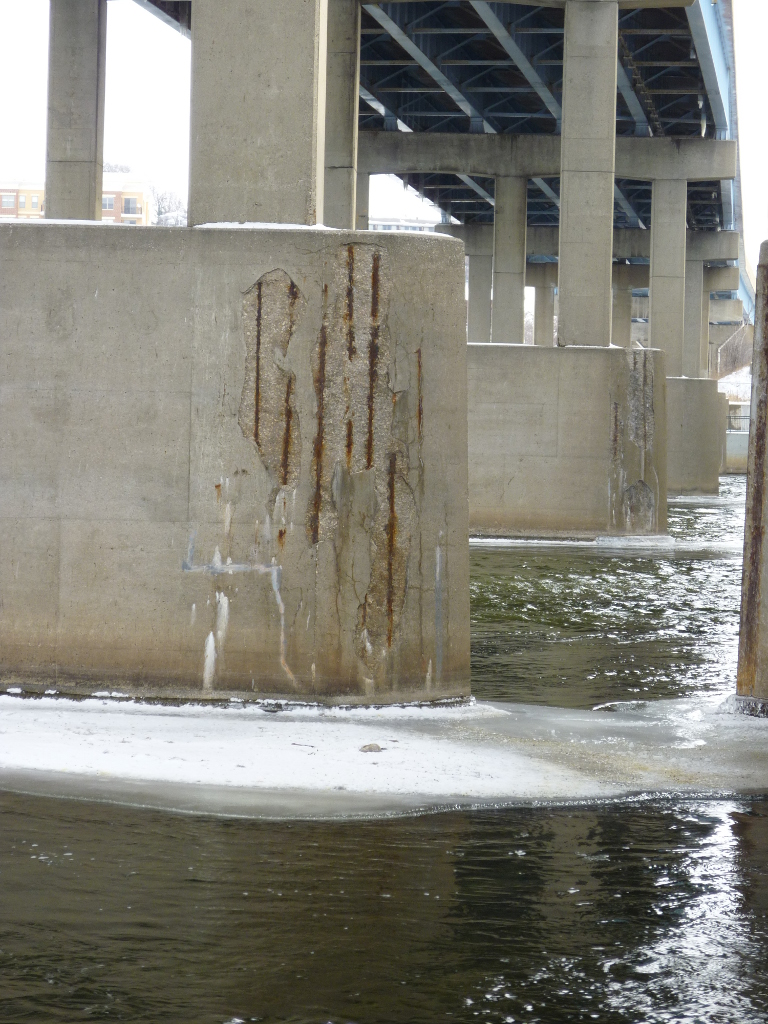
Photo Credit: Alex Mead
Above is an example of the harsh conditions civil infrastructure must endure in northern states and places where long winter climates are a fact of life. As you can see the entire outside of this fire hydrant is covered in a layer ice! Ice is incredibly strong at prying apart seems, spreading cracks, and generally reeking havoc on anything man made. Any civil engineering infrastructure that is designed for northern climates must be made to handle forces such as those presented by ice.


